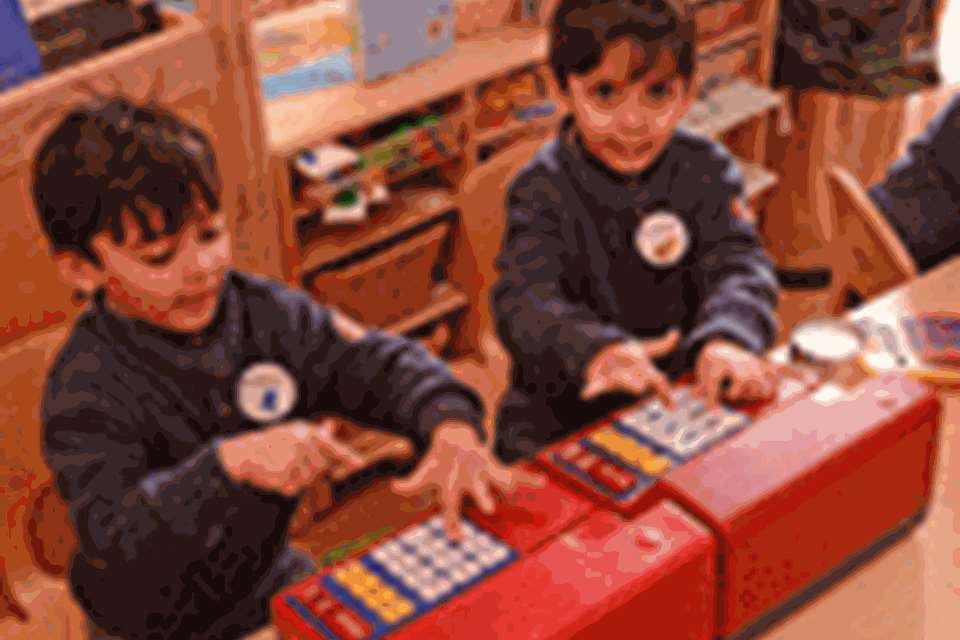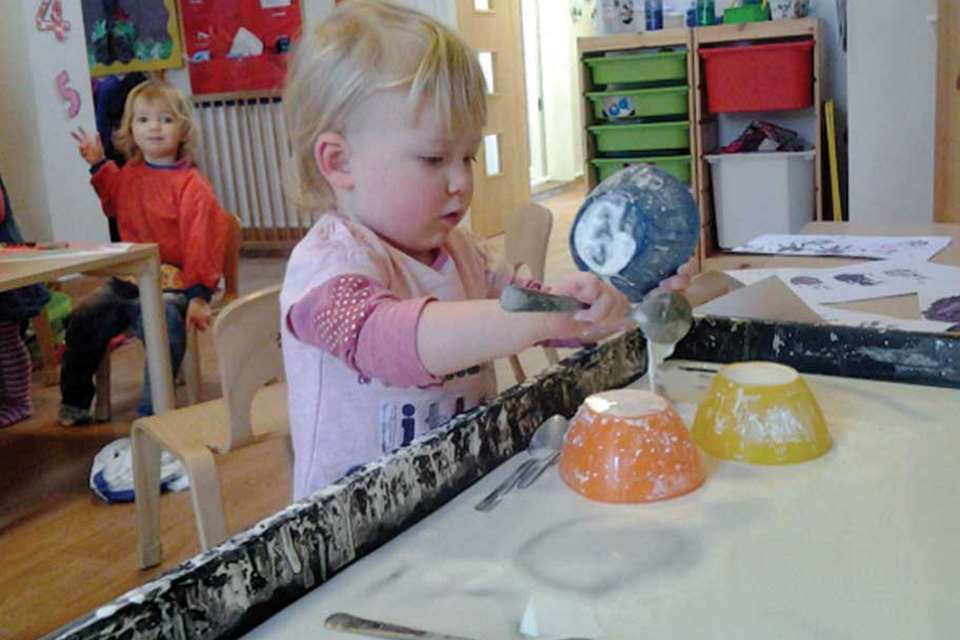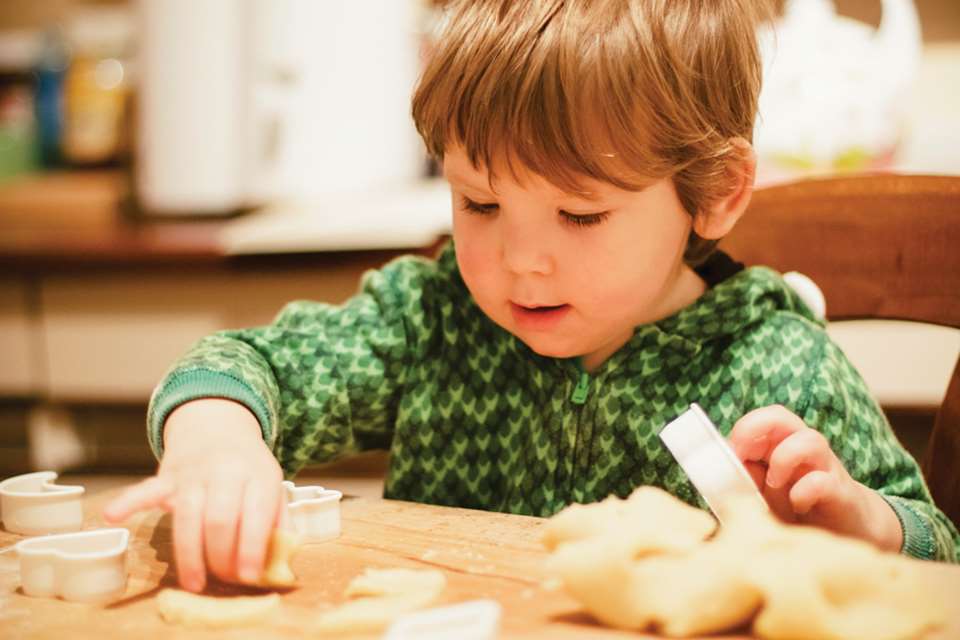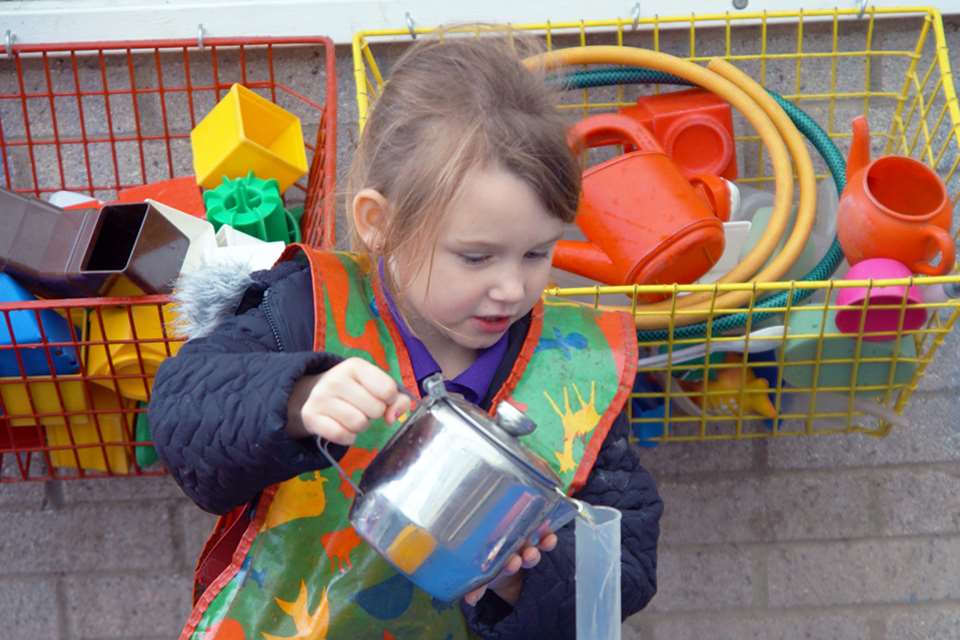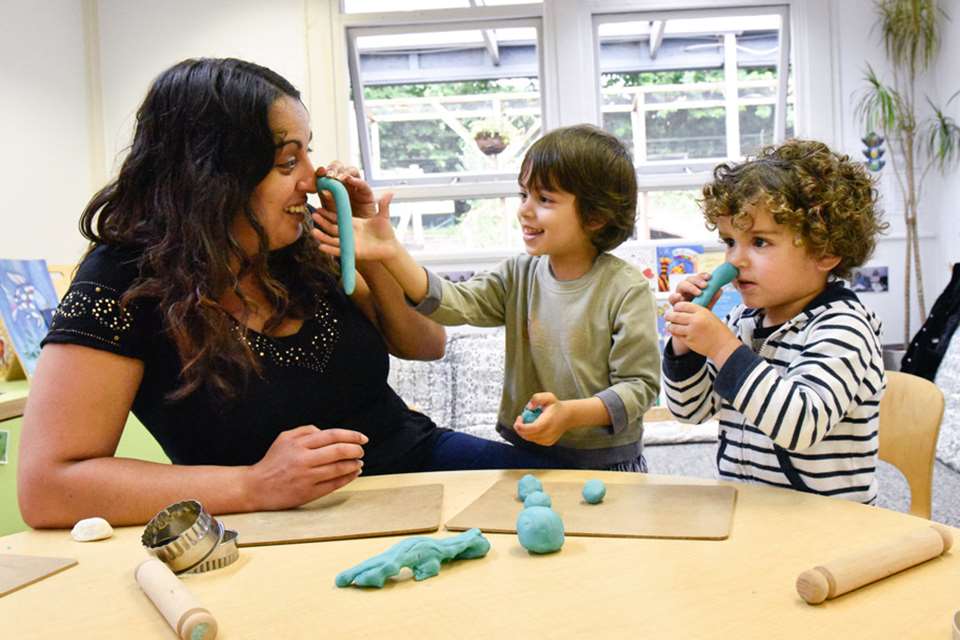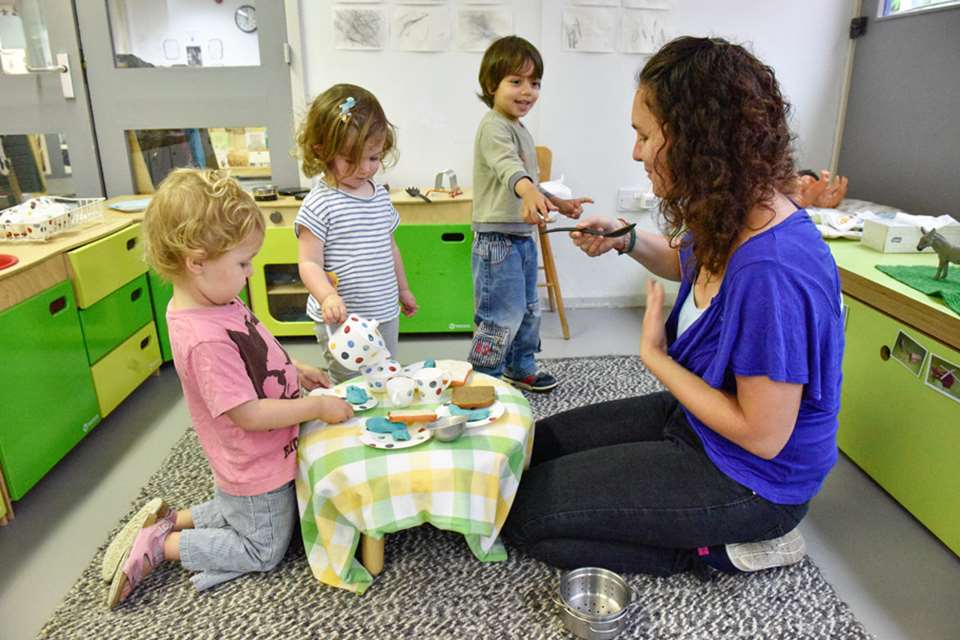Learning & Development: Mathematics: Part 3 - Action stations
Judith Dancer
Monday, March 21, 2016
Supporting the maths development of two-year-olds is an important task, Judith Dancer explains

Anyone who has worked with two-year-olds for any length of time knows that they are not just ‘shorter three-year-olds’. With growing numbers of two-year-olds accessing free nursery education places, sometimes in schools, it is crucial that we tap into their interests and support their learning in a developmentally appropriate way, and mathematics is no exception.
CHILD DEVELOPMENT
Like babies and toddlers, two-year-olds are exploring, investigating and developing their understanding of the world around them. But they are also completely mobile and extremely active. Of course, the difference between individual two-year-olds is enormous and a ‘just-two-year-old’ will behave in a very different way from the same child almost 12 months later. They will, after all, have 50 per cent more life experience.
Two-year-olds are extremely curious about unfamiliar people, objects and events. They want to find out more about everything and have a growing sense of themselves as individuals, but they also need the security of familiar adults to return to. Sometimes just knowing that an adult they trust ‘is there’ for them is enough – and a glance can provide the reassurance to continue their explorations.
In terms of their language development, two-year-olds are generally putting together at least two words in their preferred language. This includes ‘what?’, ‘why?’ and ‘how?’, which helps support their investigations and discoveries.
Their receptive vocabulary (the words they understand) is far greater than their expressive vocabulary (the words they use). Typically, two-year-olds also show an increasing interest in books and spend a lot of time making marks everywhere – sometimes where this is not wanted.
This age group are on the move all the time. They explore running, jumping, climbing, walking and sometimes creeping and crawling. They can kick balls forward, throw a ball overhand (with little accuracy) and, if they have experience, catch a ball as it is rolled towards them.
They love shaking things and making a noise, so household items and percussion instruments can be great favourites. They respond to music, engage in finger rhymes, join in songs and rhymes and dancing. Their motor skills are continuing to develop and they can unscrew lids, turn door handles and use forks and spoons – they are often great escape artists in their search for new horizons.
Two-year-olds like playing alongside other children, but usually keep to themselves. They are beginning to learn to share and to wait, but in general know what they want, and controlling their emotions can be quite challenging.
SUPPORTING TWO-YEAR-OLDS:
What can we do?
To support the mathematical learning of two-year-olds, practitioners need to take account of not just the children’s stage of development, but also their individual interests and characteristics.
Practitioners working with two-year-olds need to get to know individual children well: their likes and dislikes; when they are more likely to respond well to new experiences; when they need most support; what situations are most likely to trigger anxiety or frustration; where they like to spend time; and what they prefer to be doing.
Shape, space and measure
The EYFS identifies two aspects in Mathematics – Numbers and Shape, Space and Measures. Many appropriate experiences for two-year-olds link both aspects of mathematics, as well as other Prime and Specific areas of learning.
It is vital at this stage that practitioners are very clear about the concepts children need to understand. This is not the time to expect children to use shape names.
It is worth looking overseas to find out more about approaches to supporting young children’s mathematical learning and development. A very useful summary about supporting rich mathematical interactions is available from New Zealand (http://nzmaths.co.nz/supporting-rich-mathematical-interactions-ece). Key concepts for two-year-olds include:
• Objects that are the same: finding things that are the same or similar helps children identify their features – by size or the number of faces or edges. When children recognise these features, they can use them to sort objects.
• Objects that are the same and different: sorting is important as it helps children to understand that objects can be grouped according to their similarities. At the early stage, this may be ‘cars’ and ‘not cars’ and later move to ‘spheres’ and ‘not spheres’.
• Identifying the attribute: children need to have an understanding of measures such as weight and length as attributes (characteristics or features) of objects before they can compare and measure them.
Interactions
Children need lots of opportunities to explore objects, discover what they are like and talk about these with informed adults. Adults need to model the use of descriptive vocabulary, such as ‘big’, ‘heavy’, ‘short’, ‘light’, ‘tall’, ‘full’, ‘empty’, ‘long’. As children’s expressive vocabulary develops, it supports their ability to categorise (Gopnik et al 1999) and they are able to begin to sort toys and resources using their own criteria.
Two-year-olds need lots of time and opportunities to start using their own descriptive vocabulary – this may begin with a description of a triangle being ‘like a house’ or ‘pointy’ or ‘sharp’. Practitioners need to be clear about their own knowledge of 3D and 2D shape names and model the use of these during children’s hands-on, practical play: cone, pyramid, cylinder, cube, sphere or square, triangle, circle, oval, rectangle.
As you play with children and explore objects together, ask them sometimes to find one object that is the same as or similar to another. This will focus their attention on the different features of objects.
Popular activities involving maths include:
• Making sandwiches. Look at the bread and spread the fillings together, then cut some sandwiches into squares and triangles. Ask, ‘Have you got a sandwich like this one?’, ‘Can you find a sandwich like mine?’
• Threading chunky beads. Spend lots of time threading the beads and talking about them. Ask, ‘Can you find two beads that are the same?’, or say, ‘I need another one that looks like this.’
• Building with blocks. Take time to build and knock down blocks together, talking about the blocks as you build. Use enabling statements such as, ‘Wow, you have got two the same!’
• Copying a structure a child has made such as a bridge or set of steps. Extend by making simple structures and arrangements of your own.
• Playing with inset boards and jigsaw puzzles. Introduce simple wooden inset puzzles to the children, where they can fit pieces into matching spaces. These can include representations of real objects, such as fruit or cars, as well as shape puzzles. Chunky wooden and heavy card puzzles are easy for small hands to manipulate, although be aware that many two-year-olds are still ‘mouthing’ resources.
• Stacking boxes and toys. Many two-year-olds are curious about objects that fit inside each other and will spend lots of time stacking Russian dolls (or similar) or sets of boxes that fit into each other.
• Exploring patterns in sounds together. Tap out simple rhythms with wooden spoons on saucepans, or rattling home-made shakers. Two-year-olds are investigating their physical abilities and bodies, so now is the time to explore the noises that can be made with bodies – clapping, stamping and hammering heels on the floor.
Numbers
Children’s understanding of number starts from birth and develops gradually. Very young children develop an awareness of number names and, with the right support, use these in their speech as they begin to talk. We need to use number names and words about quantity – such as ‘lots’, ‘more than’ and ‘too many’ in our everyday interactions with children.
Activities that support two-year-olds’ understanding of number and quantity include:
• Joining in with number action rhymes. One example is:
Zoom, zoom, zoom,
We’re going to the moon.
Zoom, zoom, zoom,
We’re going very soon.
If you want to take a trip,
Climb aboard my rocket ship.
5,4,3,2,1… blast off!
• Playing early target games. Two-year-olds often love to knock things down and fit things into boxes, bags and buckets. Introduce simple skittles games, with wooden skittles or plastic bottles filled with sand or pebbles. Knock the skittles down with soft balls or rolled up socks. Try throwing soft balls or beanbags into buckets.
• Making and playing with collections that interest the children. For example, explore a collection of huge fir cones outdoors by lining them up, putting them into baskets, sharing them out – ‘One for you, and one for me’ – using them as play ‘food’ on plates or mixing them with wooden spoons in pots and pans – ‘what a lot of cones’.
• Using number words in everyday, meaningful contexts, when dressing or eating – for example, ‘Oh, just two pieces of apple left’, ‘Just one more button to do up.’
• Sorting out the toys together at tidy-up time. For example, put the sea animals in one box and the farm animals in another – ‘Wow, there are lots of cows. Where do they go?’, ‘Here’s another horse.’
• Engaging in small-world play together. Line up all the train carriages on the track – ‘Now we’ve got one engine, lots and lots of carriages’, ‘Do you need more pieces of track?’, ‘Another tunnel? That’s three altogether.’
• Making marks together. Use clay tools to make marks in wet clay, rollers and print blocks to make marks with paint, chunky stubby markers to make lots of dots on huge paper or explore muddy outdoor areas in Wellington boots and look at the footprints.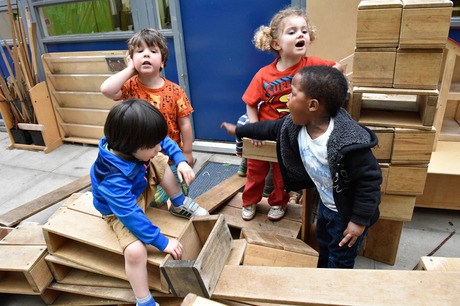
Key points
Practitioners need to remember that:
• two-year-olds are just that, two-year-olds! They are no longer babies and toddlers, but neither are they ‘rising threes’
• they need lots of time, space and support from interested, empathetic adults if they are to continue to grow in confidence
• they need to feel able to move away from trusted adults to explore and investigate, but they also need to know they can return when they need security and familiarity
• children’s experiences at age two have a crucial effect on their later development and learning
• ‘All areas of learning and development are important and inter-connected’ (EYFS Statutory Framework, paragraph 1.4)
• maths shouldn’t be ‘taught’ in isolation or by rote
• two-year-olds do not need to ‘sit down’ or ‘be quiet’ to learn maths – maths learning is happening as children run, climb, roll, jump and move around indoors and outdoors. They are learning as they noisily fill and empty boxes, baskets and bags or build up and knock down boxes
• movement and exposure to a wide variety of physical experiences allows two-year-olds to explore various concepts and lay down vital connections in the brain (Gopnik et al 1999).
• their very early mark-making – in wet sand or mud, or with chunky markers – is the basis of mathematical mark-making which supports mathematical thinking
• two-year-olds are often loud, active and unpredictable – and that is why they are learning so much, so quickly.
EYFS MATHS AT A GLANCE
Numbers
• Numbers in order
• Counting
• Recognising numerals
• Adding and subtracting
Shapes
• 3D shapes
• 2D shapes
• Position, direction, movement
• Pattern and symmetry
Measures
• Length
• Weight
• Capacity
• Time
Throughout this series, these elements will be explored alongside lots of practical ideas for appropriate experiences for babies, toddlers and young children.
Aspects and early learning goals
Practitioners need to remember that the early learning goals for mathematics are expectations for the end of the Reception year. Babies and very young children need environments and experiences that are appropriate to their current needs and interests.
Numbers
Children count reliably with numbers from one to 20, place them in order and say which number is one more or one less than a given number. Using quantities and objects, they add and subtract two single-digit numbers and count on or back to find the answer. They solve problems, including doubling, halving and sharing.
Shape, Space and Measures
Children use everyday language to talk about size, weight, capacity, position, distance, time and money to compare quantities and objects and to solve problems. They recognise, create and describe patterns. They explore characteristics of everyday objects and shapes and use mathematical language to describe them.
As Development Matters (EYFS non-statutory guidance) states, it is important to remember that: ‘Children develop at their own rates, and in their own ways. The development statements and their order should not be taken as necessary steps for individual children. They should not be used as checklists. The age/stage bands overlap because these are not fixed age boundaries but suggest a typical range of development.’
MATHS IN OUR DAILY LIVES
Although we may not see ourselves as mathematicians, we are interacting with numbers, shape, space and measures all the time in our everyday lives. Think about how you use one part of measures – weight:
• Will I be able to pick up the box of books now that it is full, or will it be too heavy?
• I’ve got half a tub of butter and I need 100g for the cake, so have I got enough?’
• If I pack another pair of shoes, will the suitcase weigh more than my 23kg luggage allowance?
• I want to lose 5kg before my holiday, so how much do I need to lose a week?
• I want to buy 1kg of apples, but will adding two more to the bag weigh more than a kilo?
MORE INFORMATION
• For our maths series, visit: www.nurseryworld.co.uk/mathematics-in-eyfs
• Bennett, E and Weidener, J (2011) Everyday Maths Through Everyday Provision, Routledge
• Dancer, J (2015) Mathematics in the Early Years: A handy guide to supporting the development of children’s mathematical skills. PACEY
• Dancer, J and Skinner, C (2015) The Little Book of Shape and Space. Featherstone
• Gopnik, A et al (1999) How Babies Think. Weidenfeld and Nicolson
• Skinner, C and Stevens, J (2013) Foundations of Mathematics: An active approach to number, shape and measures in the early years. Featherstone
• Stevens, J (2013) Maths Development Wheel. KMMD


